Media | Articles
IMSA’s 5 competition classes, explained
Sports car racing can often be overwhelming and confusing for a first-time watcher. In Formula 1, NASCAR, or IndyCar, you can differentiate cars simply by number and livery; in sports car racing, you’re usually confronted with multiple classes of cars racing on the same track at the same time. “Who’s winning?” suddenly becomes a complicated question. We’re here to demystify the situation.
The premier series of sports car racing in the United States is the WeatherTech SportsCar Championship. This series, sanctioned by the International Motor Sport Association (IMSA), features two main categories of cars split up into a total of five classes for the 2021 season. Let’s break them down.
The basic categories
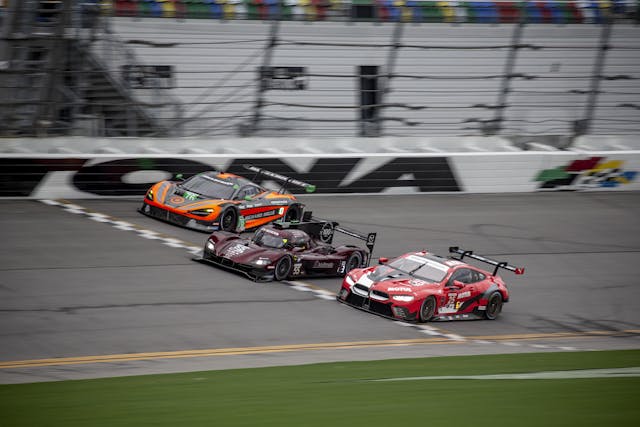
The two categories of cars in the WeatherTech SportsCar Championship are Prototype and Grand Touring. Prototypes are split into three classes: Daytona Prototype International (DPi), Le Mans Prototype 2 (LMP2), and Le Mans Prototype 3 (LMP3). Grand Touring entrants fall into one of two classes: GT Le Mans (GTLM) or GT Daytona (GTD). Distinguishing between the Prototype and Grand Touring categories is easy enough: Prototypes look like spaceships, and Grand Touring cars look like racier versions of street cars. The five classes within those basic categories, however, are much more nuanced.
DPi
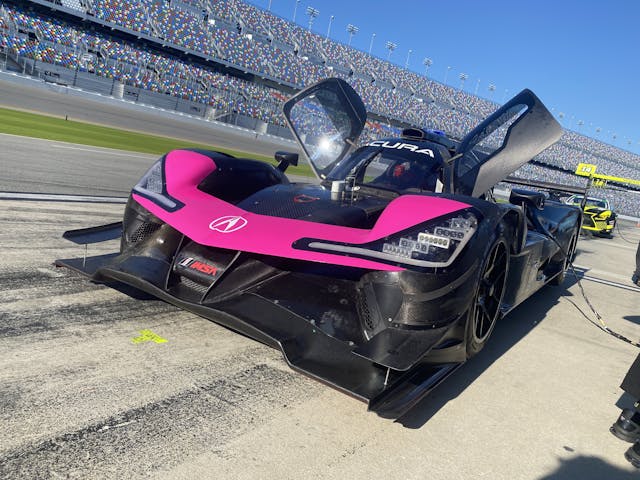
DPi is the top class in IMSA racing. Since its entrants are purpose-built race cars, this class is the most technologically advanced of the five. The relationship between a DPi racer and its manufacturer—Acura, Mazda, or Cadillac—isn’t immediately obvious, beyond a sprinkling of familiar logos and a couple vaguely recognizable contours (the pointed snout of the Acura above recalls the modern-day NSX). The closest connection to the cars you see roaming local streets is found under DPi cars’ carbon-fiber skins: They feature engines that are based on those in road-going models but highly modified for race duty.
The mills powering DPi racers range widely. Mazda’s entrants use a 2.0-liter turbo four; Cadillacs’ DPi cars use a naturally aspirated 5.5-liter V-8. (The latter is a variant of the 6.2-liter V-8 found in Cadillac’s street cars, but with a reduced displacement to meet series rules.) Though these engine designs vary, each produces roughly 600 hp, as dictated by IMSA Balance of Performance (BoP), and is backed by a six-speed sequential gearbox. Maximum legal weight for a DPi car is just over 2000 pounds. Depending on the track, this class can hit speeds of 200 mph and is allowed to use one of two IMSA-specific, semi-confidential Michelin tires: a hard or a medium compound.
Marketplace
Buy and sell classics with confidence
LMP2
The second-highest class in the Prototype category is LMP2. While LMP2 cars feature similar roots to the DPi entrants, they are not customized to display any street car features. All LMP2 cars share a Gibson 4.2-liter V-8 that produces around 560 hp. They receive a similar weight cap—just over 2000 pounds—as the DPi cars do, but differences in construction and powertrain mean that LMP2 prototypes run a bit slower than their DPi cousins. Tire choices are shared with DPi: either a hard or a medium Michelin compound, depending on the track.
LMP3
New for the 2021 WeatherTech SportsCar Championship is the LMP3 class, which has traditionally run in its own spec series in the United States. This class is a step down the ladder from LMP2 and its entries turn the slowest lap times in the Prototype category. While they feature similar construction and hold to a similar weight cap as the LMP2 entrants, LMP3 cars use a different engine: a Nissan V-8 that produces 455 hp. Unlike DPi and LMP2 cars, LMP3 race cars use publicly available rubber: Michelin S8M (medium) up front and Michelin S9M (hard) out back.
GTLM
The top class in the Grand Touring category is GTLM. These cars are based on street cars like the Chevrolet C8 Corvette and Ferrari 488 but are highly engineered and optimized for racing in order to achieve maximum performance. GTLM entrants generally weigh in at around 2800 pounds and produce around 525 hp from a variety of engines, both turbocharged and naturally aspirated, whose designs are based on production powerplants. Like the DPi entries, the GTLM cars use six-speed sequential transmissions. Top speed, depending on the circuit, is around 180 mph. The GTLM class is the only class out of the five that’s allowed to choose between soft-, medium-, or hard-compound tires; though tire suppliers are open in this class, all GTLM teams currently use Michelin.
GTD
You can think of GTD cars as street cars that have been modified for racing based on the global GT3 specifications. (In contrast, though they are largely based on their road-legal counterparts, GTLM entries are built as race cars from the ground up.)
GTD is the lowest class in the Grand Touring category, and its entries are powered by a variety of engines, all sourced from those available on the production cars and modified for race use. For instance, the Lexus RC F GT3 race car is powered by a 5.4-liter V-8, a modified version of the 5.0-liter V-8 found in the 2021 Lexus RC F. Audi’s R8 LMS GT3 uses a modified version of the 5.2-liter V-10 found in the R8. GTD entries generally produce around 500 hp and weigh around the same or slightly more than the GTLM cars, a combination that produces slightly slower lap times. GTD cars can easily be identified at night due to their yellow-tinted headlights.
Teams and tracks
The DPi and GTLM classes primarily feature factory-backed efforts. LMP2, LMP3, and GTD classes are intended for privateer customer teams. All five classes race at the season-opening Rolex 24 at Daytona (January 30–31, 2021) and at all the other longer endurance races which comprise the Michelin Endurance Cup; but the field is reduced for certain races. Lime Rock Park and Virginia International Raceway only host the GTLM and GTD classes, though these races still count towards the WeatherTech Sportscar Championship. Other, shorter races will offer DPi, GTLM, and GTD classes along with alternating additions of either LMP2 or LMP3 classes, as shown in the chart above.
Sports car racing can seem complex at first glance. However, once we can distinguish between each of the five classes in the WeatherTech SportsCar Championship, we can make sense of the on-track chaos and understand which battles are worth watching.



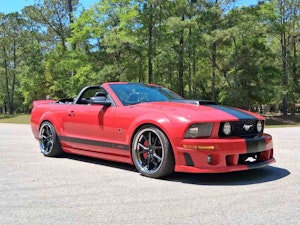




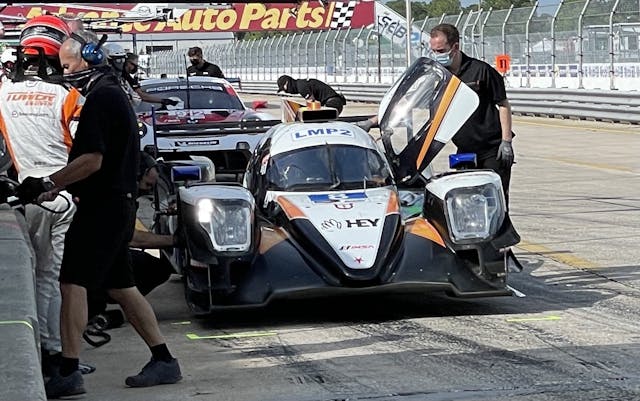
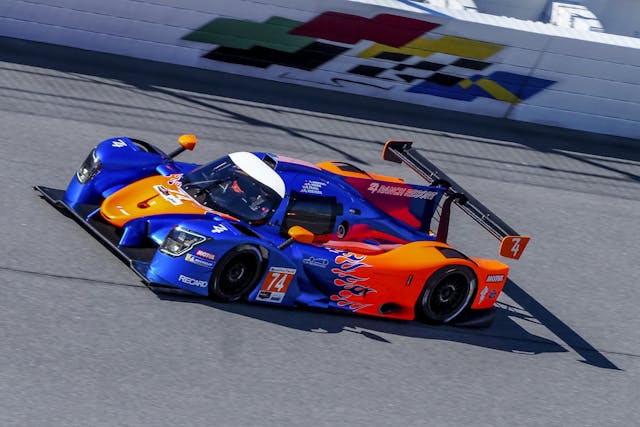

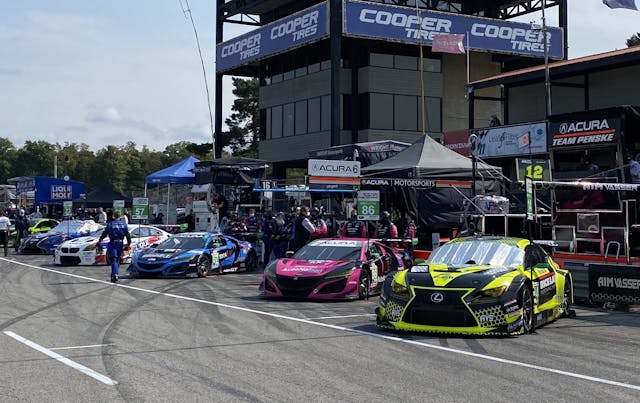
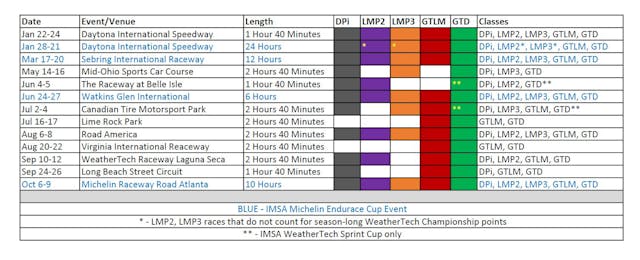







Great basic article on the differentiation of the classes.
What about classes like GS and TCR. This article, while informative only gives half the story, so for my money is useless.
Why not EV racing? Perhaps Formula cars based on 1 rotor -2 rotor- Prototypes based on 3 rotor -4 rotor limit usage to solid state energy storage